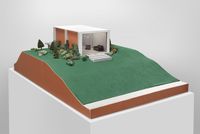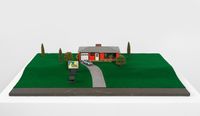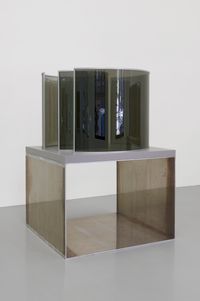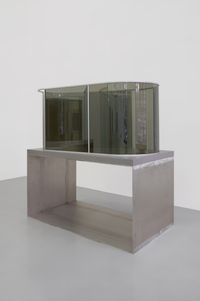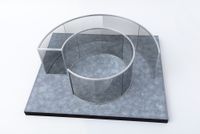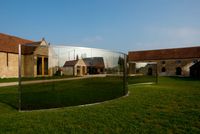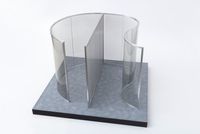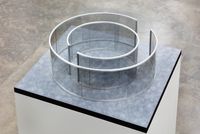Dan Graham was an artist, writer, musician and intellectual whose practice over 50 years combined the aesthetics and concerns of Minimalism with the fundamental inquiries of Conceptualism.
Read MoreThroughout a shape-shifting and wide-ranging practice, Graham often utilised the human body to explore the role of the spectator. Although curators and critics have found Graham's oeuvre difficult to summarise—due in no small part to the artist's own elusiveness about his art—Graham's practice has long been an important reference point for later generations, if not a cornerstone of Conceptual art.
Graham grew up in Winfield and Westfield, New Jersey, and in 1963 moved to New York City, where he would later publish a series of texts on art, architecture, music and television.
In 1964, at the age of 22, he co-founded the John Daniels Gallery, which exhibited the work of Minimalists and Conceptual artists such as Donald Judd, Robert Smithson, Dan Flavin and Sol LeWitt, the latter of whom had his first solo show at the space before it closed. Following the closure, Graham continued to write music and art criticism while using magazines as outlets for early text pieces—a move seen as a rejection of the elitist limitations of the white cube.
Printed in a fashion periodical, Graham's 1965 work Figurative is a reproduction of a supermarket register receipt, while his most well-known early work, Homes for America (1966–7) is a photo-based essay published in Arts Magazine. Embracing the ephemerality of the periodical with a dry humour traceable throughout his practice, the work comprises a series of photographs of homogenous suburban houses, emphasising the similarities between the repetition of post-war residential architecture and the starkness of Minimalism as he saw it at the time.
Long-engaged with the Punk and Hardcore movements, in 1987, Graham designed the cover of Sonic Youth's album Sister, while his 55-minute 1982–4 quasi-documentary Rock My Religion draws parallels between rock-and-roll culture and religious ecstasy.
In 2004, Graham collaborated with the punk group Japanther and the artists Laurent P Berger, Rodney Graham, Bruce Odland and Tony Oursler on the rock opera Don't Trust Anyone Over Thirty, which featured puppets, live music, sound recordings and video projections. However, Graham is now most recognised for the combination of architecture and art in his 'pavilions'—although he has suggested he doesn't like the word, and prefers to refer to them as public sculptures.
Begun in the late 1970s, the semi-functional sculptures combine curving mirrored glass, steel, and sometimes hedges and grass to distort perception and refashion the stoicism of Minimalist forms. Incorporating elements of bus shelters and skyscrapers, the semi-reflective pavilions act as bisecting structures and interventions in urban spaces, engaging a range of perceptual experiences, as artist/curator Peter Scott has written, 'from detached voyeur to entranced narcissist'.
In 2009, Dan Graham: Beyond (25 February–25 May, The Museum of Contemporary Art Los Angeles; 25 June–11 October, Whitney Museum of American Art, New York), the artist's first significant American retrospective, was exhibited, co-organised by The Museum of Contemporary Art Los Angeles and the Whitney Museum of American Art in New York.
Elliat Albrecht | Ocula | 2018
